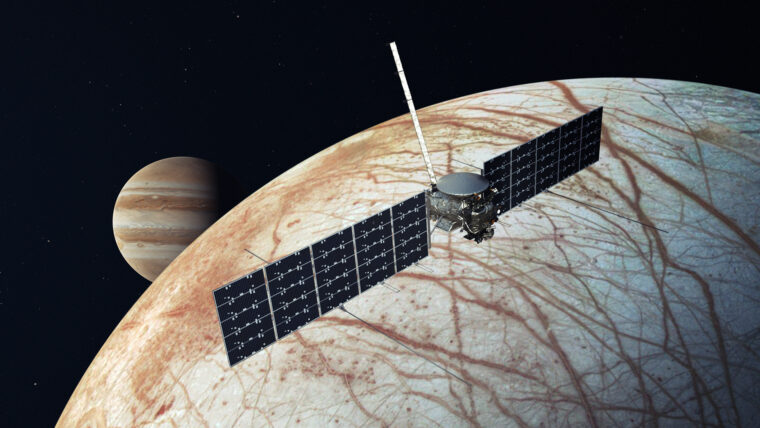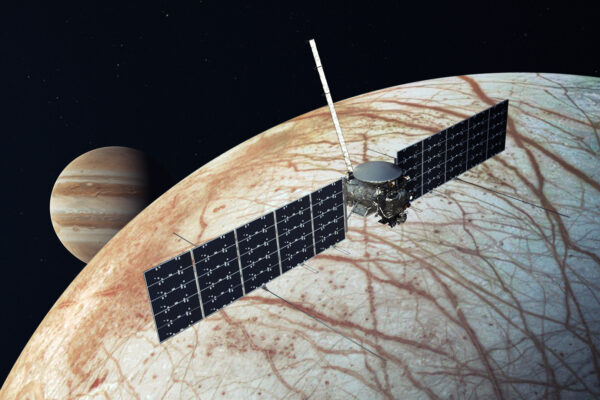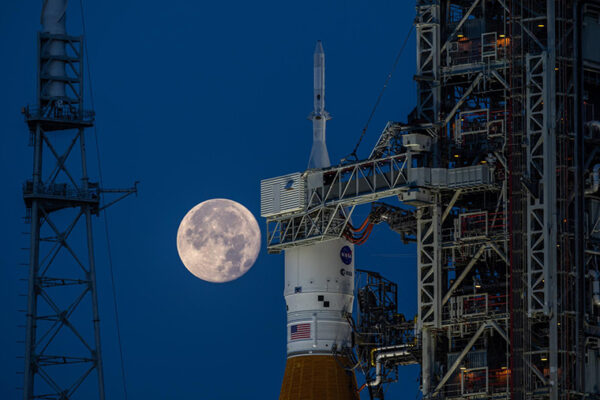NASA’s Europa Clipper spacecraft launched from Kennedy Space Center in Florida on Monday, Oct. 14. The Europa Clipper mission will conduct a detailed investigation of Jupiter’s moon Europa to determine whether there are places below its icy surface that could support life.

William B. McKinnon, the Clark Way Harrison Distinguished Professor in Arts & Sciences at Washington University in St. Louis, is a member of the Europa Clipper science team and a faculty fellow in WashU’s McDonnell Center for the Space Sciences. He has studied Europa for more than 40 years.
Europa Clipper’s three main science objectives are to characterize the moon’s icy shell and its interactions with the ocean below, to investigate its composition and to characterize its geology.
“At Europa, we’re not actually landing yet. But we want to get the full context of things. That means determining whether it has what we think of as necessary for life,” McKinnon told the Source, in a September 2024 interview. The Europa Clipper spacecraft will travel for several years before it reaches the Jupiter system in 2030.
“Of course, for life as we know it, we need liquid water. We’re pretty sure we have that,” McKinnon said. “But we also need the right kind of chemical elements. If there’s water, there’s hydrogen and oxygen. We also know there’s carbon on the surface, as the James Webb Space Telescope spectacularly confirmed. We know there’s sulfur, which is another big element for life. That may have come from the inside or it may be plastered on the outside, coming from Io’s volcanoes.”
Read more in this Q&A with McKinnon on the Source website.
Managed by the California Institute of Technology (Caltech) in Pasadena, Calif., NASA’s Jet Propulsion Laboratory (JPL) leads the development of the Europa Clipper mission in partnership with the Johns Hopkins University Applied Physics Laboratory for NASA’s Science Mission Directorate in Washington, D.C.



